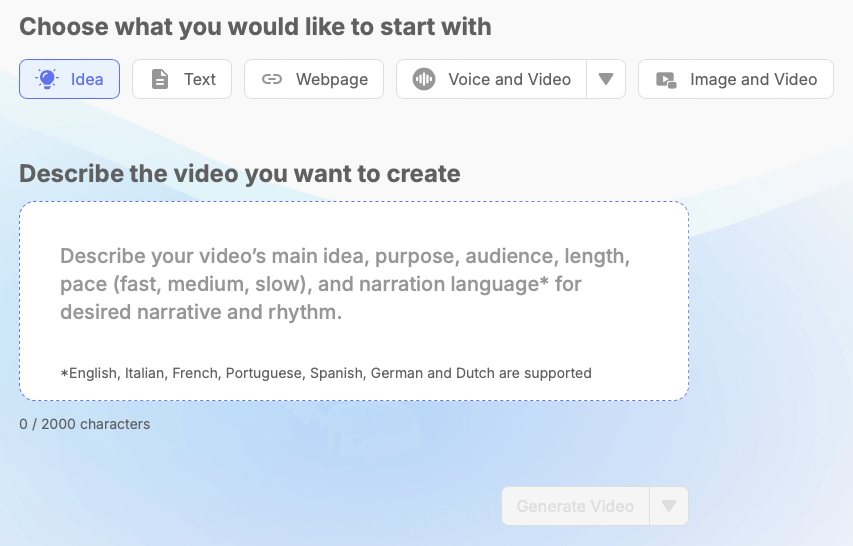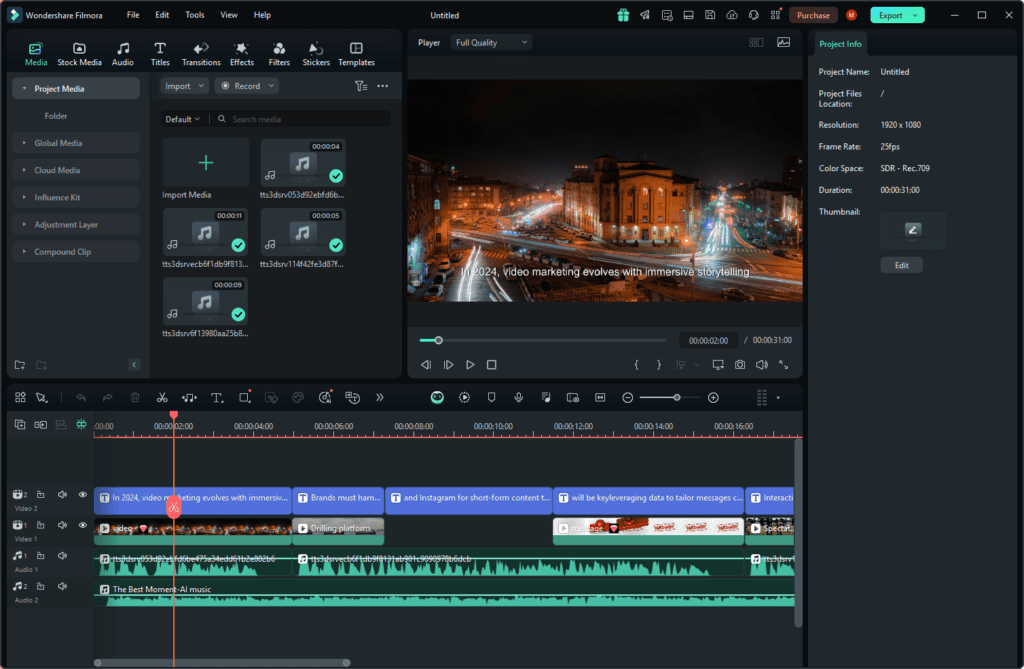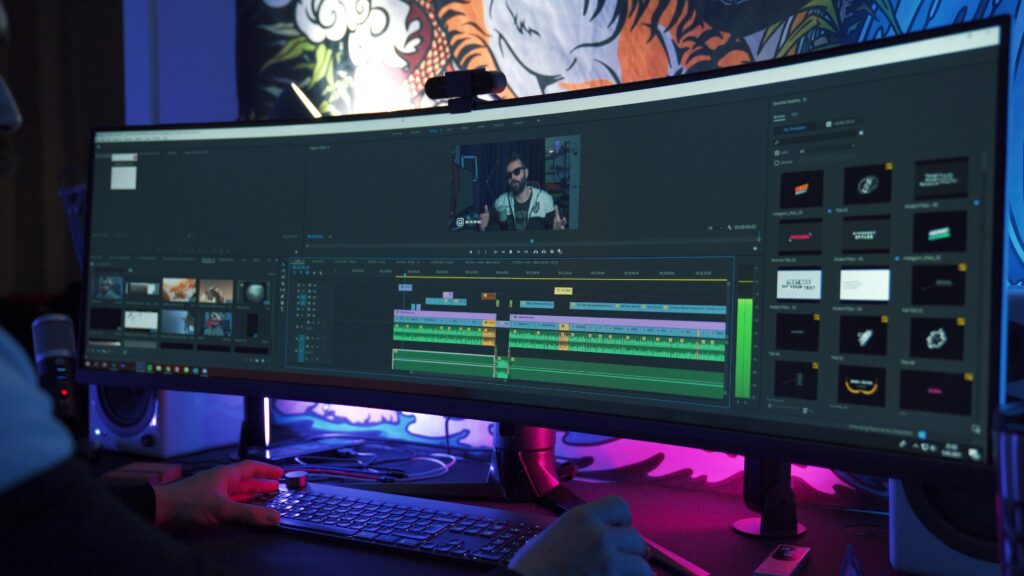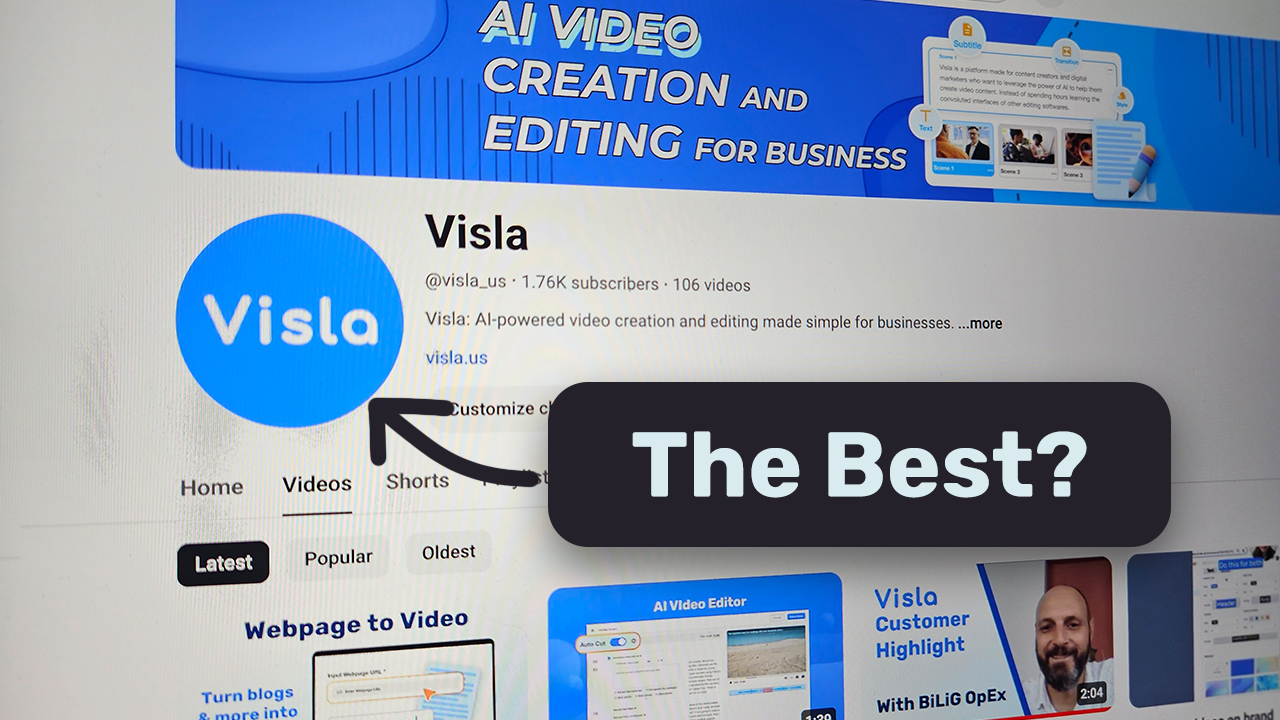When it comes to creating content for YouTube, finding the perfect video editor is crucial. As someone who’s experimented with multiple platforms, I’ve found that no editor is one-size-fits-all. Every creator has their own style, workflow, and editing needs. Here’s a rundown of some of the best text-based video editors that can enhance your YouTube game, whether you’re just starting out or ready to take your videos to the next level.
Visla

(Of course, this is the Visla blog—so humbly, we had to include ourselves!)
I have to say, Visla stands out as an all-in-one platform that simplifies YouTube video production. What sets Visla apart is its Teleprompter feature—an absolute lifesaver for recording, especially when you’re dealing with scripts or longer content. But that’s just the tip of the iceberg. With Visla, you can record, edit, collaborate, and even let the AI guide you through every step. Unlike many AI tools, Visla strikes a balance: it doesn’t overwhelm or take too much control, giving you space to make the creative decisions that matter most
Visla is especially great for those just diving into video editing, or for teams needing seamless collaboration. The Workspace feature ensures everything stays organized and accessible, whether you’re working solo or in a group. However, with so many features, it can feel a bit overwhelming at first. But once you get the hang of it, it becomes a powerhouse for content creation.
I’m biased, but I have to say: Visla works best for creators looking to do it all—content creation, collaboration, and editing without bouncing between platforms. Is it the best for everything? No. But for a one-stop-shop that saves time on tedious tasks while offering creative control, it’s solid.
Descript

I love Descript because it takes the familiar concept of editing text and applies it to video. With Descript, if you can edit text, you can edit video. Seriously, it’s that simple. You can delete words from a transcript, and poof—the corresponding video footage disappears too. Perfect for cutting out those “uhs” and “ums” without having to scroll through endless frames.
Descript’s Underlord (their clever take on AI) isn’t as intrusive as it sounds. It helps with the heavy lifting but leaves the creative control squarely in your hands. The filler-word removal is a huge timesaver, especially for podcast-style videos where dead air and vocal tics can disrupt the flow. And, it’s excellent for YouTube chapters, so if you’re a YouTuber creating educational or long-form content, this feature is indispensable.
The only downside to Descript is that while it’s fantastic for chopping up and refining video based on the audio transcript, it’s not always the best for intricate visual edits. If you’re aiming to do serious color grading or VFX, you’ll eventually need a more traditional tool.
Wondershare Filmora

This one lands perfectly in the middle ground between basic and advanced editing tools. Wondershare Filmora isn’t as basic as iMovie, and thank goodness, it’s not as complex as Adobe Premiere. It’s what I’d call an intermediate editor—a perfect stepping stone if you’re transitioning from entry-level software but aren’t ready to take on the beast that is Premiere Pro.
I’ve found that Filmora’s AI Copilot and Text-Based Editing make it super easy to get your YouTube videos polished up. Whether you’re creating quick promo videos or putting together a longer piece, the templates and resources available within Filmora help you tackle tedious tasks quickly.
However, the downside? You might eventually outgrow Filmora. If you find yourself consistently pushing the boundaries of its functionality, especially when dealing with multi-layer effects and more intense color grading, it might be time to upgrade. But for most YouTubers, Filmora will get the job done beautifully.
Adobe Premiere Pro

If you’ve been in the editing world for any length of time, you know Adobe Premiere Pro. It’s a beast—and for good reason. For professional, polished videos, especially if you’re working with a team or creating content at scale, Premiere Pro is unmatched. It’s the standard on many professional YouTube channels. I’ve used it myself on a production team, and the finished videos always looked top-notch.
But, let’s be real: it’s expensive. And the learning curve? High. I’ve been using it for years, and I still feel like I’m under-utilizing its full capabilities. Plus, the latest AI additions are impressive, making repetitive tasks like object removal or scene cuts almost automatic. If you’re serious about YouTube and want the best of the best, this is where you should land. Just be ready for the time (and money) investment.
What You Should Look for in a YouTube Video Editor

So how do you choose the best text-based video editor for YouTube? Here are a few things I think we should all keep in mind:
- Ease of Use: Does the platform offer a straightforward way to make edits? Can you learn it quickly?
- Collaboration Features: If you’re working with a team, being able to collaborate on edits is a must (and here’s where tools like Visla shine).
- AI Assistance: Is there a solid balance between AI automation and creative control? You don’t want the tool making all the decisions for you!
- Pricing: Some platforms, like Adobe Premiere, are powerful but expensive. Others, like Fliki, offer cheaper solutions, but at the cost of control.
- Scalability: Can the software grow with you? For beginners, Filmora and Fliki are great starts, but you might find yourself moving to Descript or Premiere Pro as your editing needs evolve.

